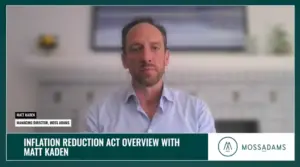Cracking Paraffin Chains
On this episode of Microbes At Work, host Tyler Kern talked with Bill Lantz, CEO at JGL Solutions. The duo dug into cracking paraffin chains and how JGL works to prevent these chains from causing issues in the oil well.
“Long-chain hydrocarbons are usually considered paraffin in the oil field,” Lantz said. “Paraffin is the wax, just like candle wax. The long chains are comprised of the oil, and they cause the oil to thicken up like the candle wax, and then you’ve got a problem in the oil well.”
JGL uses microbes to break the chains and actually change them to lower-carbon chains, also known as cracking. This is similar to what oil refineries do to improve the oil. When this occurs successfully, the paraffin is no longer present, and it makes better quality oil.
“What you get from that is the paraffin is no longer there, and it’s now a lower carbon chain of oil,” Lantz said, “You don’t get the plugging and the hot oil.”
There are times when it becomes so hard and thick in a well that it shuts it down. When it gets to this stage, not only is the well shut down, but it can lead to costly equipment repair.
Mechanically, there are a couple of ways you can deal with paraffin. Oil companies pay hot oilers to come and heat the oil to over 200 degrees and run it down the well, which helps melt the wax. Long-chain hydrocarbons increase the pour point of the oil, and, when the oil cools, it starts to harden. This is something that shouldn’t happen in the well.
Using microbes, JGL breaks the carbon chain down without the need to heat the oil. This saves time and money on hot oiling.
Follow us on social media for the latest updates in B2B!
Twitter – @MarketScale
Facebook – facebook.com/marketscale
LinkedIn – linkedin.com/company/marketscale






